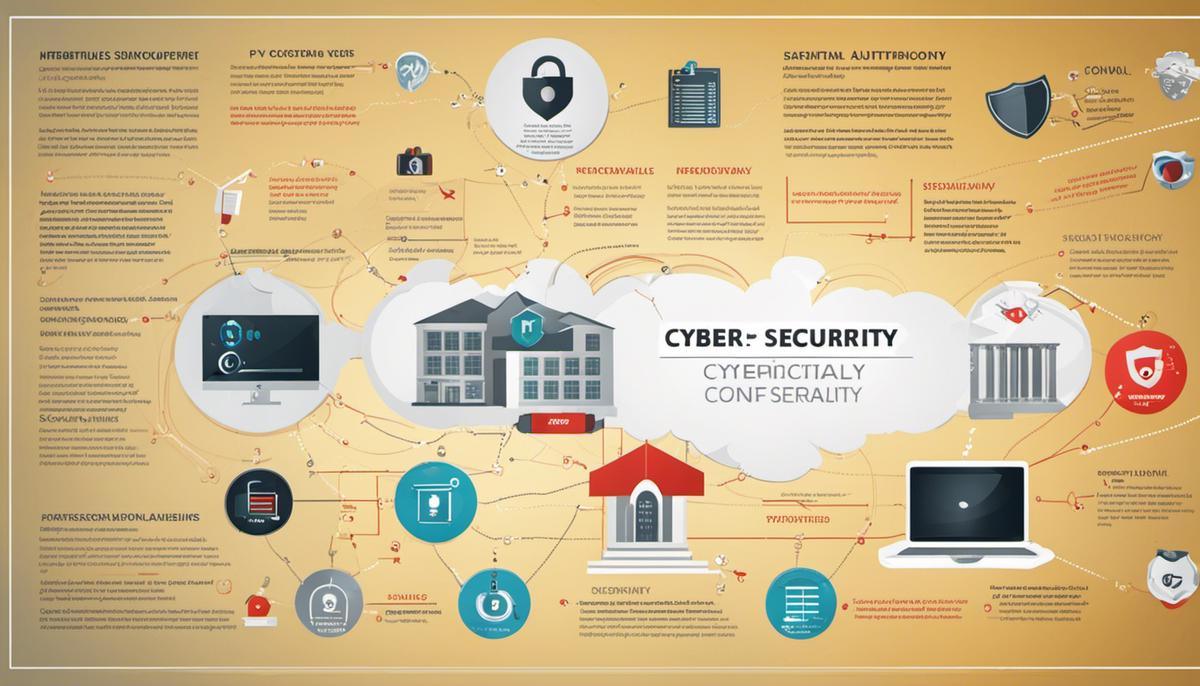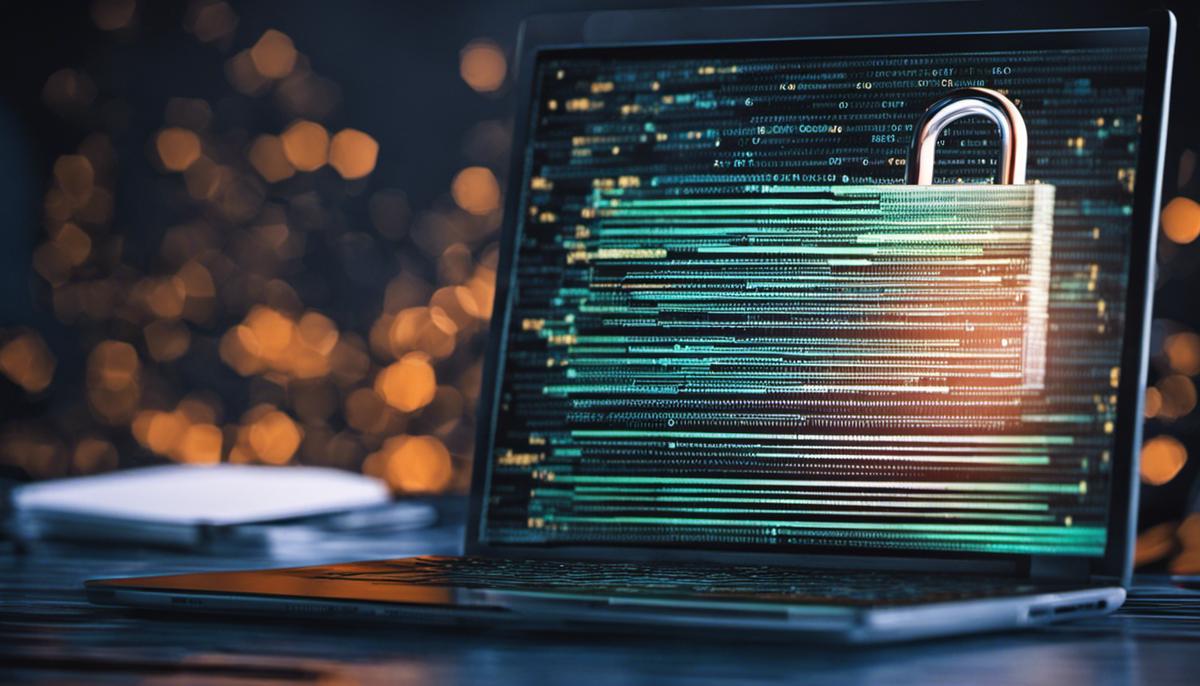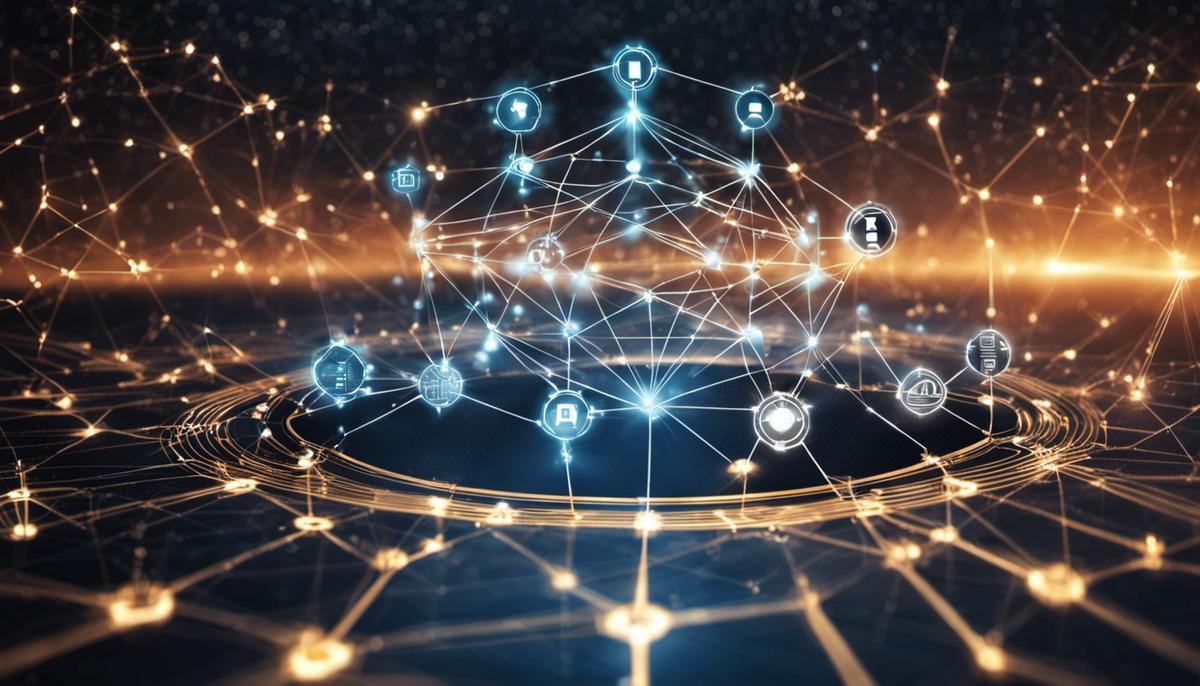In an age of intelligence and interconnectedness where data reigns supreme, protecting it becomes paramount. Living in a world where information flows freely, and digital footprints mark our every move, cyber security has gone beyond being optional – it is now a necessity. With this article, we journey through the labyrinthine landscape of cybersecurity computer technology. From exploring the basics that form the bedrock of this complex field to gleaming insight into the emergent cyber threats that keep expert security professionals on their toes, from gaining an understanding of the revolutionary advances in cyber security tech to studying notorious breaches that jolt the industry. All of this while also trying to crystal-gaze into what may lay ahead in the future of cyber security – Here’s a holistic endeavor to unravel the intricate, often enigmatic world of cyber security.
Understanding the Basics of Cyber Security
Many view cyber security as the proverbial “guardian at the gates,” the digital fortress that protects our most valuable and sensitive information. Aligned with this perspective, for those tech enthusiasts keen on adopting the latest technological trends, it’s imperative to unravel the fundamental principles embedded within the concept of cyber security.
Firstly, Confidentiality is paramount. Like a vault that safeguards a multimillion-dollar asset, cyber security mechanisms must ensure the secrecy of information. This keeps unauthorized individuals from accessing sensitive information, ensuring only those with the correct credentials can access the data they’ve been granted to.
Then comes Integrity, ensuring that the data remains unaltered in transit and is exactly the same when it reaches its destination. Cyber security measures must pack quite a punch in being able to detect and ward off threats that aim to modify or destroy original data.
Availability, on the other hand, ensures that authorized users have uninterrupted and timely access to resources and information. Everyone knows the frustration of being unable to retrieve necessary data due to system downtime. To eradicate this inconvenience, adequacy and robustness in computing resources are essential.
Next up – Authenticity; here is where cyber security ensures that transactions, as well as communication between various entities, are genuine. It’s about making sure that those you’re interacting with online are indeed who they claim to be.
Non-repudiation is another significant principle. In this context, it means that a sender cannot deny sending a message, and likewise, the receiver cannot deny receiving it. This stands to remove the possibility of false denial of a transaction or message transfer, which could otherwise leave space for digital dispute.
Last but not least, the principle of Responsiveness comes into play. Cybersecurity mechanisms should have the propensity to respond immediately to any unauthorized intervention or possible threats. Quicker response times essentially mean threats are efficiently nipped in the bud before they can cause more damage.
In essence, cyber security is not just about protection against threats—it’s a holistic approach amalgamating several principles to uphold the integrity, confidentiality, and availably of digital assets. It’s about building a digital fortress strong enough to withstand the ever-evolving saga of cyber threats while ensuring smooth sailing for authorized users navigating its currents. Evidently, in the breakthrough era of technology, where much of our lives and identities are tied to the digital realm, it becomes indispensable to incorporate these principles, utilizing technology not just to exist but to persist and thrive.

Emerging Cyber Threats
Safe, Secure, Savvy – Navigating Today’s Emerging Cyber Threats
As technology’s rapid pace continues to forge ahead, moving us into the future, it has become increasingly critical for us to stay abreast of the shifting sands of cyber threats. These ever-evolving risks are not only shaping the landscape of cybersecurity but also dictating the way we interact with and treat our tech.
Moving past the essential touchstones, such as confidentiality, integrity, authenticity, and responsiveness, it’s important to delve into the emerging threats now redefining the boundaries of online safety and data protection.
AI-fueled attacks, for one, are on the rise. Harnessing the power of artificial intelligence, tech-savvy cyber criminals now craft deceptive deepfakes and engage in intelligent phishing strategies, personalizing malicious material with a level of sophistication previously unseen. If not nipped in the bud, these AI threats could compromise sensitive data, making a robust cybersecurity infrastructure non-negotiable.
Supply Chain Attacks, another rising concern, target less-protected elements in the supply chain network, causing havoc. The infamous SolarWinds attack in 2020 is a resonating example of such attacks’ potency. It emphasized the dire need for fortified security measures across the entire supply chain trajectory.
Cloud jacking also looms large – a cyber threat linked to organizations’ increasing reliance on cloud services. By infiltrating these digital spaces, hackers gain illicit access to valuable information. Therefore, implementing the latest cloud security protocols is central to maintaining non-repudiation and ensuring the availability of services.
Lastly, let’s turn our gaze towards the threat of 5G-enabled attacks. As 5G edges us towards a new era of connectivity, it concurrently expands the risk scope for cyber threats. The increased number of connected devices on this high-speed network provides more entry points for hackers, mandating stringent safety measures for IoT devices.
The updated threat landscape unquestionably poses unprecedented challenges to data security, demanding a shift from traditional security strategy to more comprehensive, highly advanced solutions. Recognizing these threats early and developing robust security measures is crucial, as is understanding which technology tools provide suitable defenses. Staying ahead of these threats requires ongoing vigilance, horizon scanning, and building security measures that are as dynamic and evolving as the threats they are designed to counteract.
Moving forward, armed with the right knowledge and tools, we can respond to these threats proactively, reinforcing our defenses and ensuring we are well-equipped to navigate this continually evolving cyber landscape. Let it serve as a reminder to never be complacent in the face of technology, keeping the balance between harnessing its power and mitigating its potential risks.

Advanced Cyber Security Technologies
Delving into the world of cybersecurity, it is critical to underscore the role of advanced technologies in optimizing security measures. With innovations such as Machine Learning, Blockchain, and Quantum Computing transforming the landscape of cybersecurity, their efficacy hinges significantly on their seamless deployment and integration.
Machine Learning (ML) and Artificial Intelligence (AI) offer game-changing transformations in cybersecurity. Rooted in the capability to catalyze threat detection, their proficiency lies in learning from historical cyber-attack patterns and subsequently predicting similar vulnerabilities. Machine Learning no longer waits for a human to identify and address cyber threats. It tracks and neutralizes threats real-time, greatly reducing the potential impact and severity of security breaches.
Replicating the human brain via algorithms allows ML to sift through voluminous data during threat analysis, something that would ordinarily take humans innumerable hours or even be impossible due to sheer volume. It is also essential in identifying zero-day vulnerabilities – threats not yet identified in the system- by flagging unusual activity. Leveraging ML and AI, cybersecurity shifts from a reactive to a proactive stance, predicting and mitigating threats before they materialize.
Pivoting to Blockchain, a buzzword often associated with cryptocurrency, is now turning heads in the cyber defense sector. Blockchain brings forward an immutable and decentralized ledger system, making data tempering an immensely strenuous process. Blockchain’s capacity to encrypt each transaction and link it irreversibly to transactions before and after it leads to an indelible audit trail, bolstering data integrity.
Distributed Denial-of-Service (DDoS) attacks, prevalent cybersecurity threats, can also be mitigated by Blockchain through its decentralized nature. Savvy attackers often target centralized servers for a successful DDoS attack. Should these servers be replaced with a plethora of nodes (as in a blockchain network), attacker’s missions get complicated, and DDoS threats get substantially neutralized.
Crowning the list of advanced technologies is Quantum Computing. In its basic sense, quantum computing revolves around quantum bits or qubits, offering enormous computational power. For cybersecurity, quantum computing promises ultra-secure communication links, commonly referred to as Quantum Key Distribution (QKD). In the event of any attempt at intrusion during communication, QKD facilitates the alteration of the encryption key, rendering the stolen data useless.
While these technologies offer a wealth of advancements in cybersecurity, they are not entirely infallible. ML and AI can be tricked by skilled attackers into recognizing malicious code as benign. Blockchain, despite its touted security parameters, is still susceptible to a ‘51% attack,’ wherein an entity gaining control of the majority of the network could alter the data. The implementation of Quantum Computing, for all its potential, is still in the early stages, with adoption and optimization issues yet to be ironed out.
To conclude, the technological warp speed at which we are operating demands an even more accelerated focus on cybersecurity. Leveraging advanced technologies serves as a powerful tool in contending with cyber threats. However, ensuring these technologies’ secure and effective implementation remains pivotal to realizing their full protective potential. “In cybersecurity,” as they say, “Innovation is the key, but vigilance is the doorkeeper.”

Case Studies on Cyber Security Breaches
In dissecting the high-profile cybersecurity breaches of recent years, a critical learning can be elucidated: the irreplaceable role of cybersecurity education and awareness. Cybersecurity is not a responsibility that solely resides with the IT department but extends to all personnel who access sensitive data and systems. The Yahoo data breach in 2013 serves as a painful reminder of this point, with 3 billion user records getting compromised due to an intricate web of deceptive phishing attempts and insider negligence.
Constant training and information updates about the evolving nature of threats can help build a fortified human firewall. A well-informed workforce can serve as the first line of defense against phishing and other social engineering maneuvers. Emphasis should be applied across the organization – from the new intern to the top leadership. Everyone should understand the potential risks of lax cybersecurity practices.
Further, the risk of legacy systems has been highlighted time and again in significant breaches. The WannaCry ransomware hits in 2017 dramatically demonstrated how outdated systems could cripple organizations globally. Intriguingly, the victims were not obscure companies with no IT budget but established entities such as NHS, FedEx, and Deutsche Bahn. Lesson? Transitioning to updated systems is non-negotiable for optimum cybersecurity. Strategically replacing or patching older systems can pay dividends in thwarting breach attempts.
In line with this, prioritizing continuous security improvement is crucial. Cybersecurity is not a ‘set-it and forget-it’ arena. It demands continuous monitoring and improvement strategies. Case in point, the infamous Equifax breach in 2017 occurred due to a known vulnerability in the Apache Struts software. A diligent vulnerability management program entailing regular patching and updates could have averted the staggering loss of 147 million records.
Beyond software, stronger emphasis should be placed on encryption and secure data-at-rest policies. The Uber data breach of 2016 is a testament to the importance of data encryption. The personal data of 57 million drivers and customers was left unprotected in cloud data storage, leading to disastrous consequences. Incorporating sturdier encryption techniques and regularly auditing to verify their proper implementation is a lesson worth applying.
Lastly, the central theme recurring in all significant breaches is the inevitability of incidents – it’s a matter of ‘when’ more than ‘if’. Hence, continually building a robust incident response and recovery plan is essential. The Equifax breach resulted in an excruciating 76-day response time period due to a poorly managed incident response – a costly misstep. A well-structured incident response plan that includes clear communication protocols can help control damage and restore operations promptly.
Collectively, these lessons reinforce how keeping pace with evolving threat landscapes cannot be achieved with technology alone. It requires a well-rounded strategy involving up-to-date systems, continuous security improvement, robust incident response plans, and, above all – perpetual cybersecurity education and awareness.

Future of Cyber Security
Progressing into the future, cyber security is heading towards a more automated, intelligent, and predictive manner of protecting systems and data. With the rise of more advanced, increasingly sophisticated threats, high-tech advancements like the development and implementation of behavioral analytics in data protection are becoming non-negotiable.
Behavioral analytics plays a significant role in predicting future cyber attacks by learning from previous compromise attempts. This technology employs machine learning algorithms to recognize patterns and identify irregular activities. By analyzing vast amounts of log data, behavioral analytics can differentiate between regular and anomalous behavior while pinpointing potential threats.
Another clear trend involves the coordination and integration of different security platforms to improve detection and response times. As cyber-attacks grow more complex, responding to a threat detected by one tool with another can be time-consuming and inefficient. Hence, the future lies in security platforms that communicate with each other, driving towards a more cohesive, streamlined cybersecurity response system.
Furthermore, the Zero Trust model drives the future of cybersecurity by dismantling the traditional “trust but verify” method, instead following a “never trust, always verify” mentality. As organizations increasingly adopt remote working, the traditional corporate network is disappearing and, with it, network-based security. Zero Trust offers a solution supporting a distributed network while ensuring every request is thoroughly authenticated, authorized, and encrypted before access is granted.
Meanwhile, homomorphic encryption is an advanced cryptographic method promising to revolutionize data privacy. Unlike traditional encryption techniques, which require decryption before conducting operations, homomorphic encryption allows computations to be performed directly on encrypted data, providing result that, when decrypted, matches the outcome of operations performed on the plaintext. This method dramatically enhances data privacy and security, particularly when processing sensitive data in public clouds.
The future also spotlights secure access service edges (SASE). Integrating network and security services into a single cloud-based service, SASE converges functions like Secure Web Gateways, Firewalls as a Service, and Zero Trust Network access. Offering ease of management and upgraded security, SASE solutions are primed to be a significant piece of the cybersecurity puzzle.
While we anticipate these promising advancements, it’s paramount to acknowledge continued risks. No technology is foolproof, hence the need for cybersecurity professionals to remain updated on the latest threat intelligence and adapt their security measures accordingly. Future-facing cybersecurity will be characterized by perpetual learning and the ability to adapt swiftly to new challenges.
Admittedly, the cybersecurity landscape is evolving at a rapid pace, fuelled by emerging technological innovations. While these advancements present opportunities for improved security measures, they also heighten complexity and potential vulnerabilities, requiring cybersecurity professionals to remain agile, ever-vigilant, and ready for whatever comes next. After all, cybersecurity isn’t a final destination but a never-ending journey. As we look ahead, we can expect a future punctuated by increased intelligence, integrated responses, and security that’s woven into the very fabric of technology.

As we persist in the Age of Information, fortification and resilience against cyber threats will increasingly determine survival and success. Equipping ourselves with a strong understanding of cyber security principles, awareness of common and emerging threats, practical knowledge from past breaches, and anticipation of future trends are all essential for traversing the ever-volatile cyber landscape. While technological tools enhance our capabilities, they are only as foolproof as the strategy and knowledge guiding their utilization. This exploration provides a strong and rounded perspective on cyber security, serving as a beacon for individuals and groups invested in preserving the sanctity and safety of the cyberspace thereby steering the helm of the digital future confidently.